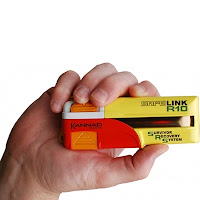I have never perceived ocean racing to be particularly risky. I don’t have a pull towards the risky aspect of it, I am purely in it for the boat-against-boat racing aspect. For sure things can happen, but as I am generally sailing with very skilled guys, I always feel quite safe. But I guess it is time to revisit the issue after two near-sinkings in just a bit more than one round the world race for me to date.
 |
| The damage to Sanya Lan in the cradle in Motril, Spain |
It was only the first morning after the Leg 1 start when the room in front of our forward watertight compartment quickly filled up with water. Fortunately it happened while we were still in “civilized” waters. For sure it would have been harder to limit the damage and keep the boat afloat had it happened mid South Atlantic, in the strong westerlies.
The carbon fiber boats are great – very light and stiff – until the carbon layers start delaminating / breaking. As we experienced in the 08-09 race when we almost sunk with “Ericsson 3” off Taiwan, a quite small puncture to the outer carbon fiber skin will quickly let water pressure explode the layers apart, especially in rough sea state / slamming conditions.
 |
| Ericsson 3 in Taiwan, with the damaged area marked out in blue tape |
Now it is a very uncommon occurrence that this was to happen to me (and Richard Mason) two times in as many races, but it makes for a bit of re-evaluation of the risk/danger aspect of what we're doing.
Anyway, I never felt physically in danger as we were sailing in the Mediterranean, in daylight, in breezy but manageable conditions, communication systems still working and most of the crew in one piece (Andy man down as he broke his ankle a few hours before).
Falling over board is still my one fear on these boats, as stopping the boat and finding a person in the water at night in rough conditions within reasonable time will always be hard. However, for the period between the two last Volvo Ocean Races I have cycled competitively on the road, and I still feel more vulnerable at the bike than on the boat. But it might of course be because I have done far more miles on the boat and feel more comfortable in that environment. I guess also we spend far more time on the boats..
But to reduce the risk when falling overboard, I will take lots of care to get the life jacket on when appropriate, and try to get into the survival more than I use to. To be honest, I only think I used it once in the last race. It is just a bit of hassle to take it on and off all the time when I go back and forth between the nav station and talking to the guys on deck. I am also using both the VOR supplied R10 AIS personal beacon, and a personal EPIRB just in case..













